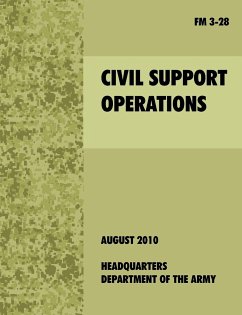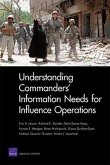This field manual (FM) provides keystone Army doctrine for civil support operations. It expands on the discussion of civil support operations, the fourth element of full spectrum operations, in FM 3-0. This manual focuses on the planning, preparation, execution, and assessment of civil support operations, which are conducted within the United States and its territories. It discusses the role of Army forces cooperating with and supporting civilian organizations in domestic operational environments, with particular emphasis on how operations conducted by Army forces within the United States differ from full spectrum operations conducted overseas. All civil support operations buttress the capabilities of civil authorities within the United States. The mechanisms that regulate civil support come from law, policy, regulation, and directive. Civil support operations require Army leaders to understand an environment shaped primarily by federal, state, local, and tribal agencies, and circumscribed by law. Nowhere is this more striking than in the roles of the National Guard. In sharp contrast to stability operations, Army forces may conduct civil support operations with National Guard forces responding under the direction of a governor or alongside active duty forces as part of a coordinated national response. FM 3-28 explains the reasons for the division of forces and provides considerations for the entire Army, including all three components: Regular Army, Army Reserve, and Army National Guard.
Hinweis: Dieser Artikel kann nur an eine deutsche Lieferadresse ausgeliefert werden.
Hinweis: Dieser Artikel kann nur an eine deutsche Lieferadresse ausgeliefert werden.








